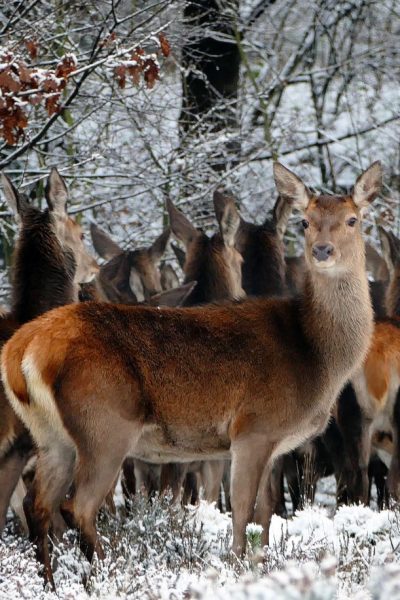It’s a fascinating, multi-faceted concept centered around the notion that the natural world should be afforded the same legal rights and protections as humans. That’s what.
The notion of ascribing legal rights to Nature is a huge topic, with a myriad of different facets, thorny questions, interesting issues, and the like. So in keeping with how I typically process big, heady topics, I wanted to start out with something of a high-level roadmap. Lots to chew on here, and to keep this post (relatively) brief we’ll only scratch the surface. Details to come in subsequent posts.
Here’s how I break-down the concept of ascribing rights to nature in my own pea brain:
- History and historical antecedents;
- Technical, legal issues;
- The science; and
- The spiritual side.
Sure. Great. OK, let’s dive right in….
History and Historical Antecedents
For those who need to situate topics within the history of their development, the Community Environmental Legal Defense Fund provides an excellent timeline of how this concept has developed in the U.S. and abroad over the last 40 years and how it is being implemented in practice throughout the world.
And for those wanting to dive deeper into the history and development of the concept, Roderick Frazier Nash’s 1989 book, “Rights of Nature: A History of Environmental Ethics” is the place to start.
As Nash, CELDF, and others have articulated, one of the most fascinating and compelling aspects of the movement to ascribe rights to Nature is how closely it reflects the dynamics that are present in three of the most important movements in the history of the United States: the abolitionist movement, the civil rights movement, and the suffrage movement.
The goal of each of these movements was to transform a class of beings from legal objects (property) to legal subects (rights holders). Accomplishing this massive feat entailed interjecting these rightless classes of beings into a system that specifically excluded them. Doing so meant a change not just in legal precedent but a culturual shift as well. Supporters of these movements demonstrated (sometimes over decades) that the current system worked against the interests of the people it governed and therefore must be expanded in order to be brought into alignment with itself. As Nash puts it, “Each time democratic ideology broadened since 1776 it was to accommodate new groups as members of Jefferson’s ambiguous community of equal ‘men.’” The Rights of Nature movement follows this same path in expanding the “community” of rights holders to include the more-than-human world.
For many folks, I’m sure, the idea of granting legal rights to an elk herd, a watershed, or a glacier is a bridge too far. I mean, c’mon, African Americans and women are people–ascribing rights to rocks and trees and animals is just nonsense.
Yep, I hear ya.
But looking back to those previous movements from the comfort of the 21st Century, it’s hard to remember just how unthinkable it was for American society at the time to take seriously the notion that slaves and women ought to have the same rights as white men, to be citizens, rather than property.
Moreover, consider the fact that our legal system recognizes as rights holders all manner of non-human legal entities: corporations; trusts; partnerships; and the like. And those ‘persons’ not only aren’t “people,” heck they don’t even exist outside a set of documents filed with the state.
Perhaps we could consider granting rights to a class of beings that not only actually exists but on which the well-being and survival of our own species absolutely depends….
The Legal Issues
Basically, the technical, legal issues here come down to the procedural concept of “standing.” Generally speaking, standing refers to the ability of a would-be plaintiff in a lawsuit to demonstrate to the court that he/she/it has sufficient connection to, or has sustained sufficient harm from a law or action, to justify his/her/its participation in the case at hand. Standing presupposes that the would-be plaintiff be a “juridical person,” a person or entity that the court recognizes as having rights that are being violated by the law or action in question.
Christopher Stone, a law professor at USC, kinda literally wrote the book that started the broader conversation 1972. Actually it was a law review article entitled, “Should trees have standing – toward legal rights for natural objects.” And it went the 1970’s version of “viral” when Justice William O. Douglas of the US Supreme Court cited it in his dissenting opinion in a widely-publicized case at the time known as “Sierra Club v. Morton” (405 U.S. 727 (1972)).
The Sierra Club, on behalf of its members, brought suit under the Administrative Procedures Act to prevent the federal government from approving development of a ski area in a pristine area of the Sierra Nevada mountains on the premise that destruction of the habitat would harm the aesthetics and ecology of the area.
The majority basically said, “Ummm…. No,” precisely because the Sierra Club lacked standing. The harm they claimed their members would suffer was too remote, too tangential to the proposed development since it wasn’t happening in their backyard. Justice Douglas articulated the logical response to the Court’s opinion, stating:
The critical question of “standing” would be simplified and also put neatly in focus if we fashioned a federal rule that allowed environmental issues to be litigated before federal agencies or federal courts in the name of the inanimate object about to be despoiled, defaced, or invaded by roads and bulldozers and where injury is the subject of public outrage. Contemporary public concern for protecting nature’s ecological equilibrium should lead to the conferral of standing upon environmental objects to sue for their own preservation. This suit would therefore be more properly labeled as Mineral King v. Morton.
But Nature is not seen as a juridical person. And beings that are not legal subjects in a given jurisdiction do not have the right to bring suit in a court of law to seek redress for their grievances. Going back to the abolition analogy, if a slave was injured by another slaveowner, the slave could not bring suit for the violation to his or her person; rather that slave’s owner could bring suit for damages to his property (the slave).
That example highlights another hugely important aspect of what is being proposed by the Rights of Nature movement. Granting legal rights to Nature and the underlying legal concept of standing means that (i) the harm in question would be measured in terms of harm to the environment itself–not to some indirect benefit that a human might lose–and (ii) the damages would be awarded to the aspect of nature on behalf of which the lawsuit was filed.
Consider my favorite example of a river that is polluted by toxic waste from a nearby manufacturing facility. A typical legal strategy involves filing a class action lawsuit on behalf of all the downstream landowners whose properties have been damaged by the waste. These landowners clearly have standing because they’ve been injured, the harm can be measured in terms of the economic diminution in the value or productivity of their property, and damages are awarded accordingly.
Sounds about right until you consider (i) the collective action problem of rounding up all those riparian landowners and convincing them to bring a lawsuit on the basis of what they may consider relatively little harm and to recover what may be relatively little economic value to them, individually, (ii) the fact that measuring the harm in terms of harm to the landowners completely ignores the harm to the ecological value of the river, which may have been rendered unfit for supporting plant and animal life by the toxic waste, and (iii) awarding financial damages to the landowners does absolutely nothing (or relatively little) to remediate the mess and restore the river to true health.
Now consider how different it would be if an individual or a group could sue on behalf of the river itself, putting the harm to the river’s ecology front and center in the controversy and focusing the award of damages on what will be required to rehabilitate the river.
Clearly a river can’t march into court and air its grievances or even hire a lawyer to do so. But neither can a corporation. Individual humans act on behalf of a corporation, and that’s exactly how a river could enforce rights bestowed upon it. But corporations are governed by specific codes at the state-level and massive bodies of caselaw. Where I see a ton of work to be done is hashing out how these rights of nature would be structured and at what level of government. Would a new legal entity need to be established to represent the legal rights of a watershed, for instance? Would these rights be granted at the local, state, and/or federal level? What humans would have the right to establish that entity? Would it be a trust model or a business entity model? Who would be the trustee or sit on the board of directors? Or would any individual in the jurisdiction have authority to bring a suit on behalf of the watershed? How would we establish what is a ‘legitimate’ and an ‘illegitimate’ encroachment on the rights of the watershed?
Granting standing to natural beings is just the beginning of a very long conversation about how we live in relationship with Nature as a legal matter……
The Science
I’m a little nervous writing about the scientific lens to all this, considering the last time I studied science I was 19, somehow managed a “B-” in Organic Chemistry, and, seeing the “D” on the horizon in Genetics, elected to go “Pass-Fail” at the last minute and scraped by with a “P.”
But there is a fascinating and reciprocal relationship here between science and the law with respect to the Rights of Nature movement.
The discipline of Ecology has had a tremendous impact on the development of thought in this area. Going back to Nash and The Rights of Nature… we learn that it was through the ecological research in early 20th Century America that we developed the understanding (which we now take for granted) of the interconnectedness of all species within an ecosystem. Nash articulates this understanding as the foundation of environmental ethics in the U.S.
On this basis, it’s clear that separating out a single species for protection and ignoring others doesn’t make a great deal of sense. The health of an ecosystem depends upon the ability–the “right”–of each species to live out its essential nature in order that the complex web of relationships stays in balance. Each element in this web has its own integrity, its own value. So we can see how this scientific insight forms the basis of not just an ethical but also a legal framework. And indeed we see this reflected in the community bills of rights that CELDF drafts, in the Ecuadorian constitution, and in the recent decisions of the government of New Zealand and the High Court in India: Nature has a legal right to live out its essential purpose.
But what about humans? What role do we have to play, and why should we share our legal sandbox with Nature? Can’t we just take our toys and go home?
A lecturer at UC Davis, M. Kat Anderson, sheds some light on the question in her fascinating book Tending the Wild: Native American Knowledge and the Management of California’s Natural Resources. Through years of painstaking research and in-person interviews she reveals the extent to which Native Americans living in California had been actively managing the natural world around them for thousands of years before white Europeans arrived. And the fertility of the land that so inspired the early European visitors was, in part, the result of the generations upon generations of active relationship between the Native Americans and the natural world in which they lived.
Ironically, as Anderson points out, this contradicts the environmental consciousness of notables such as Aldo Leopold and John Muir that developed out of the 20th Century ecological research who believed that true Nature was untouched by humans. As she writes, “Staring in awe at the lengthy vistas of his beloved Yosemite Valley, or the extensive beds of golden and purple flowers in the Central Valley, Muir was eyeing what were really the fertile seed, bulb, and greens gathering grounds of the Miwok and Yokuts Indians, kept open and productive by centuries of carefully planned indigenous burning, harvesting, and seed scattering.”
For tends of thousands of years, Native peoples have tended to their surroundings. It’s clear that humans do have a very important–perhaps critical–role to play. Refinement of our ecological understanding of the natural world–and our place in it–is indispensable for the development of new systems of governance that protect and preserve the natural world.
If we are to be stewards of the natural world and live alongside the more-than-human world, rather than at its expense, I believe an ecological awareness needs to become a common language upon which future governance structures can be built. The questions I raised at the end of the previous section regarding the structure and enforcement of proposed legal rights for nature must be informed, at least in part, by science-based insights. Does it make sense to structure the rights at the level of an ecosystem, or does it make more sense to break it down further and ascribe rights at the species level, or the sub-species, or the herd, or…? How do we understand and articulate the ecological value of a pristine river? On what basis do we undertake rehabilitation efforts when damage has been done?
Scientific understanding isn’t the only lens that informs this discussion, but I do believe it’s a critically important one because for better or for worse we 21st Century westerners no longer have a native consciousness. There’s work I think we need to do to reawaken some of that, but may not be realistic to suggest we should go back the consciousness of native peoples that live in more direct relationship with their surroundings. Our version of recognizing our inherent connection to Nature and ascribing rights to it will likely look much different than it does for native peoples. I think an ecological awareness will be a big part of that.
At the same time, however, it’s a two-way street. Science certainly needs to inform our discussions about the rights of nature. But I suspect that ascribing rights to Nature may also change the tenor of scientific research–rendering it less an academic pursuit for its own sake and more like medicine, where the scientific inquiry is always aimed at better caring for and promoting the well-being of the objects of study. I don’t mean to imply that biologists currently don’t embody that sense of stewardship and care–most do, I’m sure–but I do wonder to what extent the consciousness of scientists about their work changes when/if the objects of study are truly considered our “equals.”
The Spiritual Side
Ahhh….consciousness. That brings us to the spiritual side of all this, doesn’t it? Entire books can be (have been) written on this subject alone so although this is my favorite aspect of the Rights of Nature movement I will confine my comments only to what I perceive to be the fundamental spiritual truth underlying this movement: that is, the essential connection between humans and the natural world. From everything I’ve read, the perceived distinction between humans and Nature simply did not (does not) exist for native peoples. The possibility of ascribing legal rights to Nature invites us to heed this inborn wisdom of native peoples and wake up to the reality that we are fundamentally connected to Nature–that the well-being of our own people depends upon the health of the biosphere. How much of the havoc humans have wrecked on the natural world stems from this belief that we are somehow different from the plants and the animals–that paving over an ecosystem somehow not only doesn’t negatively effect us, it positively enhances our existence in the name of Progress?
In essence, then, the rights of nature movement fundamentally is an effort to transform our systems of governance to reflect this essential connection between humans and the natural world, rather than ignoring it. And in order for us as a people to embrace this movement and implement new systems of laws that bring humanity into a sustainable relationship with the biosphere we must embrace this connection. I think this is at the heart of what Thomas Berry meant by ‘The Great Work’ in his book of the same title. “The Great Work now, as we move into a new millennium, is to carry out the transition from a period of human devastation of the Earth to a period when humans would be present to the planet in a mutually beneficial manner.”
Yes. That’s what all this is all about….



